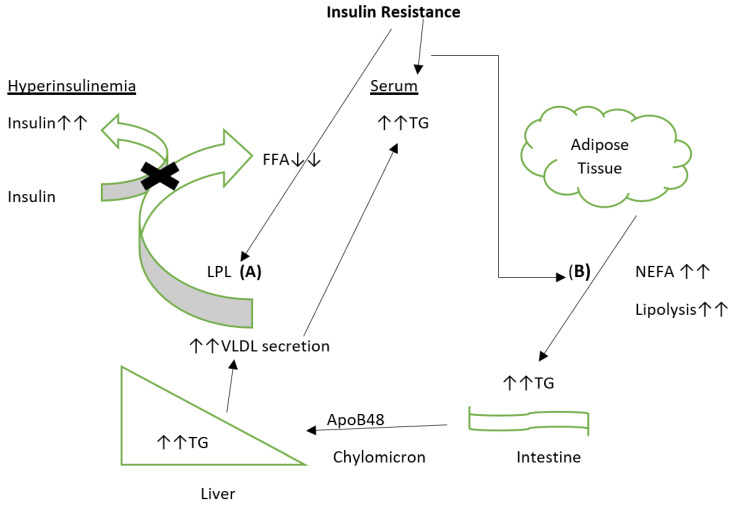Figure 1.
Insulin resistance leads to the diminished capacity of lipoprotein lipase (LPL) to metabolize very low-density-lipoprotein (VLDL) and other triglycerides (TG) rich particles to free fatty acids (FFA). It ultimately results in increased serum triglycerides because of blunted LPL activity (A). Chronic hyperinsulinemia facilitates VLDL production in states of insulin resistance. The suppressive effects of insulin are lost in insulin-resistant conditions, e.g., obesity or diabetes mellitus (DM). (B) Insulin resistance can lead to increased nonesterified fatty acid (NEFA) production via lipolysis, resulting in increased FFA flux to the liver, leading to increased VLDL production. Additionally, Fatty acids (FA) may increase, due to increased FA trapping by insulin-resistant adipocytes. Increased serum FA is associated with stimulation of the body to produce large amounts of reactive oxygen species.

